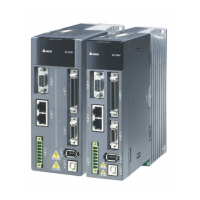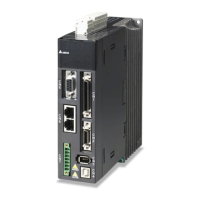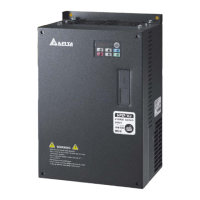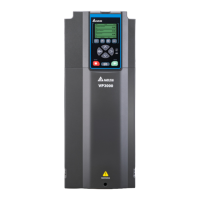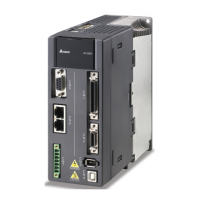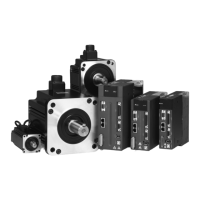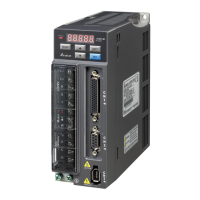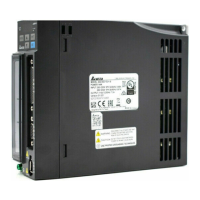ASDA-A2 Chapter 9 Communications
9-6 Revision February, 2017
9.3 MODBUS Communication Protocol
There are two modes of MODBUS networks communication, ASCII (American Standard Code for
information interchange) mode and RTU (Remote Terminal Unit) mode. Users could set the
needed communication protocol via parameter P3-02. Apart from these two communication modes,
this servo drive also supports function of 03H to access more than one data, 06H to write one
character and 10H to write multiple characters. Please refer to the following descriptions.
Code Description
ASCII Mode:
The so-called ASCII mode is using American Standard Code for Information Interchange (ASCII) to
transmit the data. Between two stations (Master and Slave) to transmit data 64H, the master will
send‘6’which represented by 36H of ASCII code and ‘4’ represented by 34H of ASCII code.
ASCII code of digit 0 to 9 and characters A to F is as follows:
Character ‘0’ ‘1’ ‘2’ ‘3’ ‘4’ ‘5’ ‘6’ ‘7’
ASCII code 30H 31H 32H 33H 34H 35H 36H 37H
Character ‘8’ ‘9’ ‘A’ ‘B’ ‘C’ ‘D’ ‘E’ ‘F’
ASCII code 38H 39H 41H 42H 43H 44H 45H 46H
RTU Mode:
Every 8-bit of data is constituted by two 4-bits hexadecimal characters. If data 64H is transmitted
between two stations, it will be transmitted directly, which is more efficient than ASCII mode.
Character Structure
Characters will be encoded into the following framing and transmitted in serial. The checking
method of different bit is as the following.
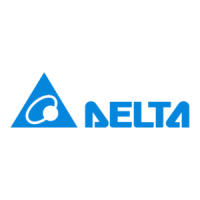
